Trip Report: Amazing Four Days in Kyoto
In May 2023, we spent four wonderful days in Kyoto, a city with an incredible mix of tradition and modernity. In this blog post, we’ll share our actual four-day itinerary, as well as details of the places we visited, the restaurants we tried, and the dishes we savored. We’ll also share insights and tips we picked up along the way to help you plan your own Kyoto trip.
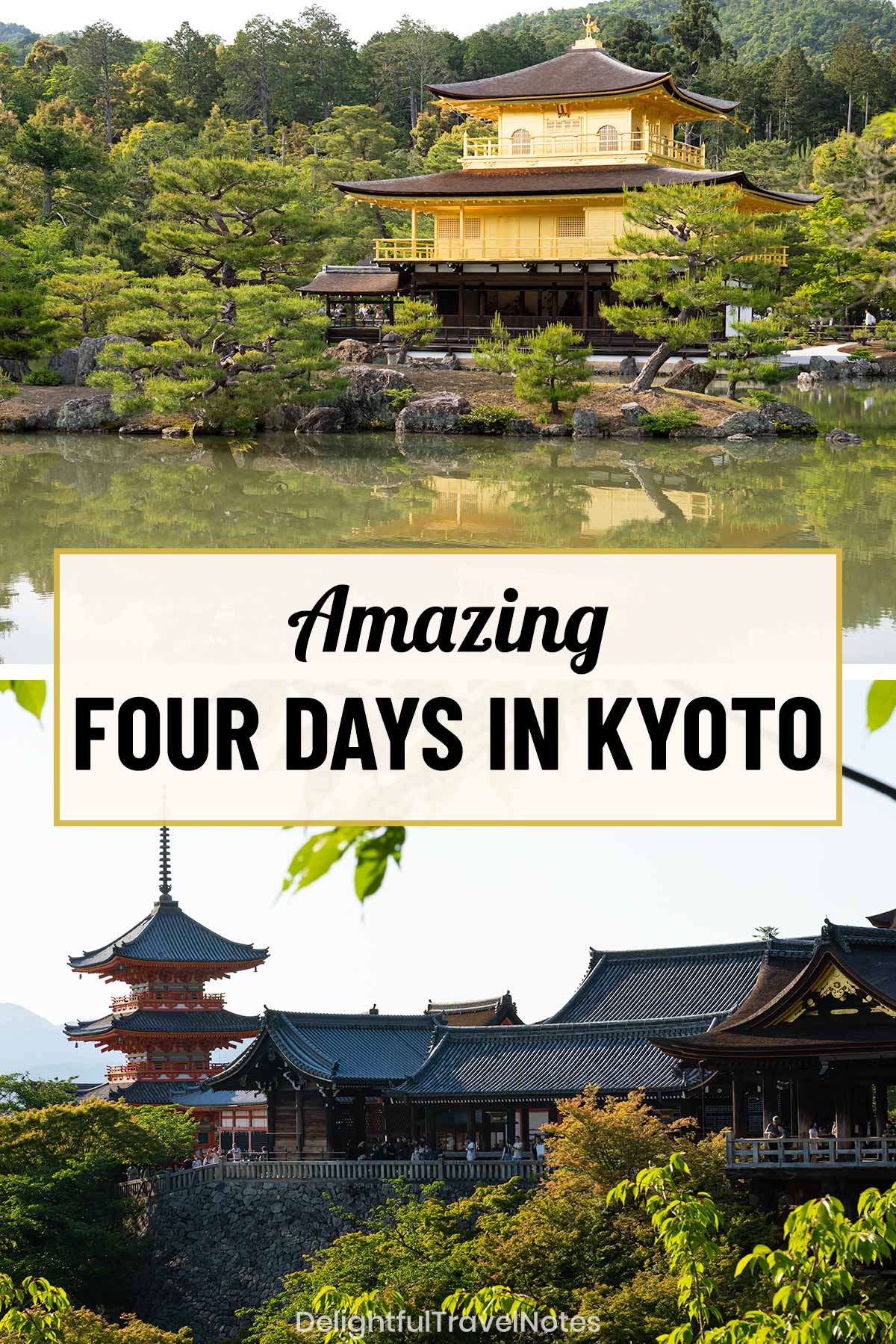
Our trip was from May 11th to May 15th, and except for some light rain, the weather was perfect. As advocates of “slow travel”, we opted for a more relaxed pace, giving ourselves enough time to soak in everything. Our interests include culture, history, architecture and food.
Kyoto isn’t a city to rush through, and we feel that four days provide an ideal timeframe for first-time visitors to this city. This allows enough room to wander through its historic temples and shrines, and enjoy the plethora of local specialty foods on offer. If you are wondering how to spend four days in Kyoto, we hope you’ll find our trip report useful. We also have more tips for an amazing trip to Kyoto here.
Highlights & Takeaways
- We had a great stay at the Celestine Hotel Gion.
- The temples and shrines in Kyoto are beautiful. Don’t forget to walk around the gardens, which are also impressive.
- Don’t miss out on trying Kyoto specialty foods. Kyoto cuisine is very distinctive with its light and delicate flavors.
- Our half-day walking tour in Gion was thoroughly enjoyable.
- Bring good shoes because you will walk a lot. When you’re tired, taxis can be found quite easily near major tourist attractions. The fares are not expensive for short distance.
- Some popular attractions are always crowded, but the further you walk, the quieter it will be.
Day 1
Traveling to Kyoto
From Ho Chi Minh City, we boarded a Vietnam Airlines midnight flight. Much to our disappointment, there was a last-minute switch from the spacious Boeing 787 to an Airbus A321. So instead of lie-flat seats, we were given angled-recline business class seats. We couldn’t sleep much, and the only redeeming point of this flight was its decent Japanese breakfast.
Landing at the Kansai international airport on time (around 7:30am), we spent the next 45 minutes to get through the early morning immigration line. The Ubigi eSims that we installed on our phones before the flight were activated and worked right away. Airalo eSim is another popular option with travelers.
We headed to the JR office to buy Icoca cards and Haruka Express green tickets to Kyoto, and hopped aboard the adorable Hello Kitty train. The ride was smooth, and the green car was worth it for us. It gave us larger seats in a quiet car, allowing us to get a much-needed nap after the red-eye flight.
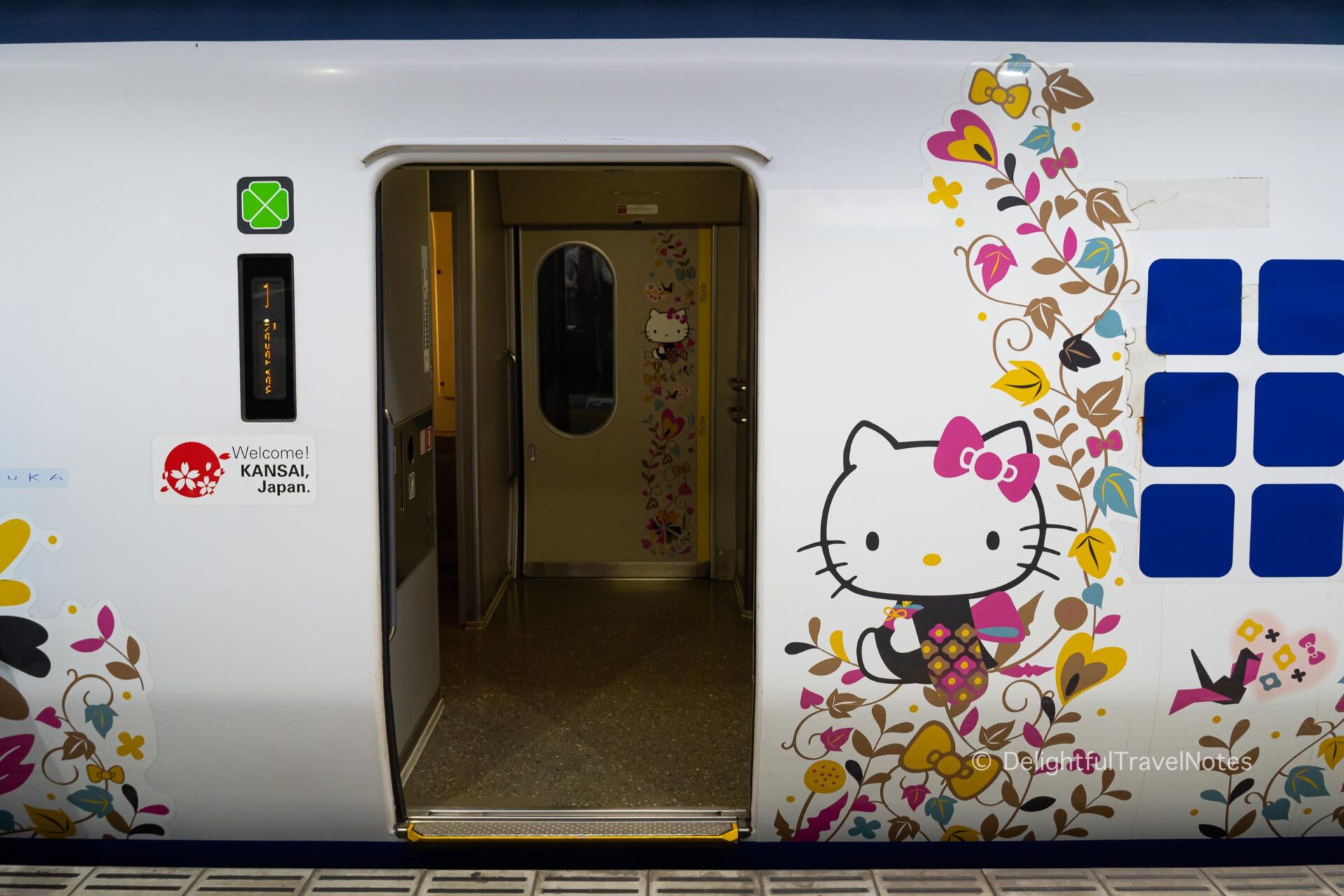
Depending on your itinerary, you can take a look into getting an ICOCA + Kansai Thru Pass package, or JR West Kansai Area Pass. Both passes can be purchased online and redeemed once you are in Japan.
Arriving at Kyoto station, we got on a taxi and reached the Celestine Hotel Gion after a quick ride. We dropped off our luggage as an early check-in was not an option, which seemed like a common practice in Japan.
Lunch & Rest
The weather was cool and sunny, so we headed out to explore. Our lunch was a delicious bowl of udon at Omen – Shijo Pontocho. The tempura udon set was a delightful combination of chewy noodles, crispy tempura, and an abundance of crisp vegetables. The staff was polite and friendly, and the other customers were all locals.
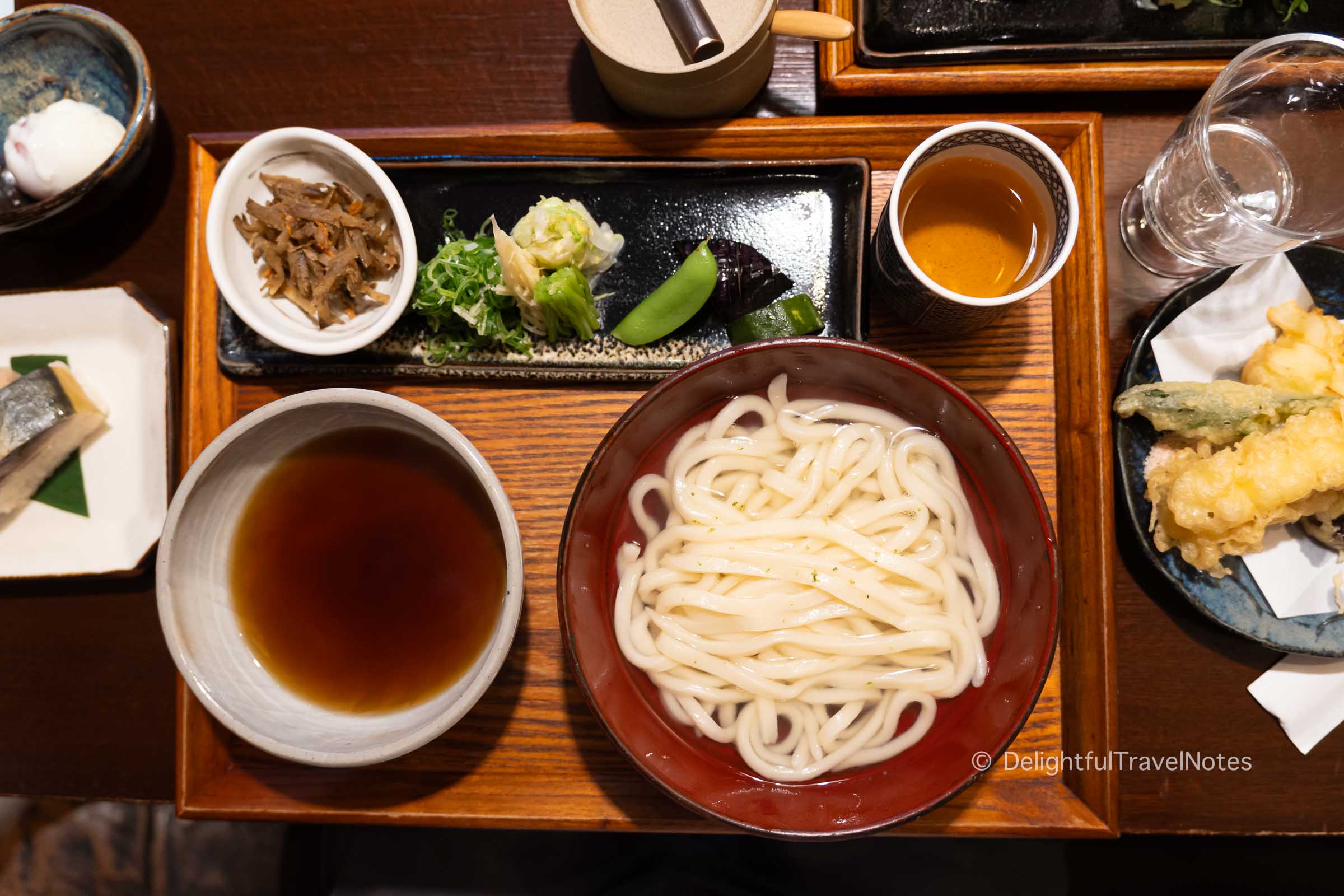
We then decided to explore the basement food hall (called depachika) at Takashimaya. The vast array of cooked food, fresh produce, and especially the large, aromatic strawberries, were a feast to our eyes. We bought the strawberries and they were very fragrant and juicy with a mild sweet taste.

We wanted to stop by Gion Tokuya for some dessert, but the line was out the door with people using umbrellas to shade themselves from the sun. So we decided to go back to the Celestine Gion Hotel to check in. Our deluxe twin room was ready and we were pleased to see how clean and neat it looked.

Check Availability of the Celestine Gion Hotel
Agoda.com Booking.com
Kiyomizu-dera
Around 4 pm, we left the hotel for Kiyomizu-dera temple, which was 10 minutes walking from the hotel. On the way to the temple, we walked through Sannenzaka street and found it packed with people and vehicles.
The temple was crowded, but the further we ventured into the temple grounds, the more quiet it became. Overall, a beautiful place with impressive architecture and grounds.

I got my goshuincho (a book for collecting seals from temples and shrines), and received my first goshuin. Here’s the post I explained what is goshuin and how to ask for goshuin.
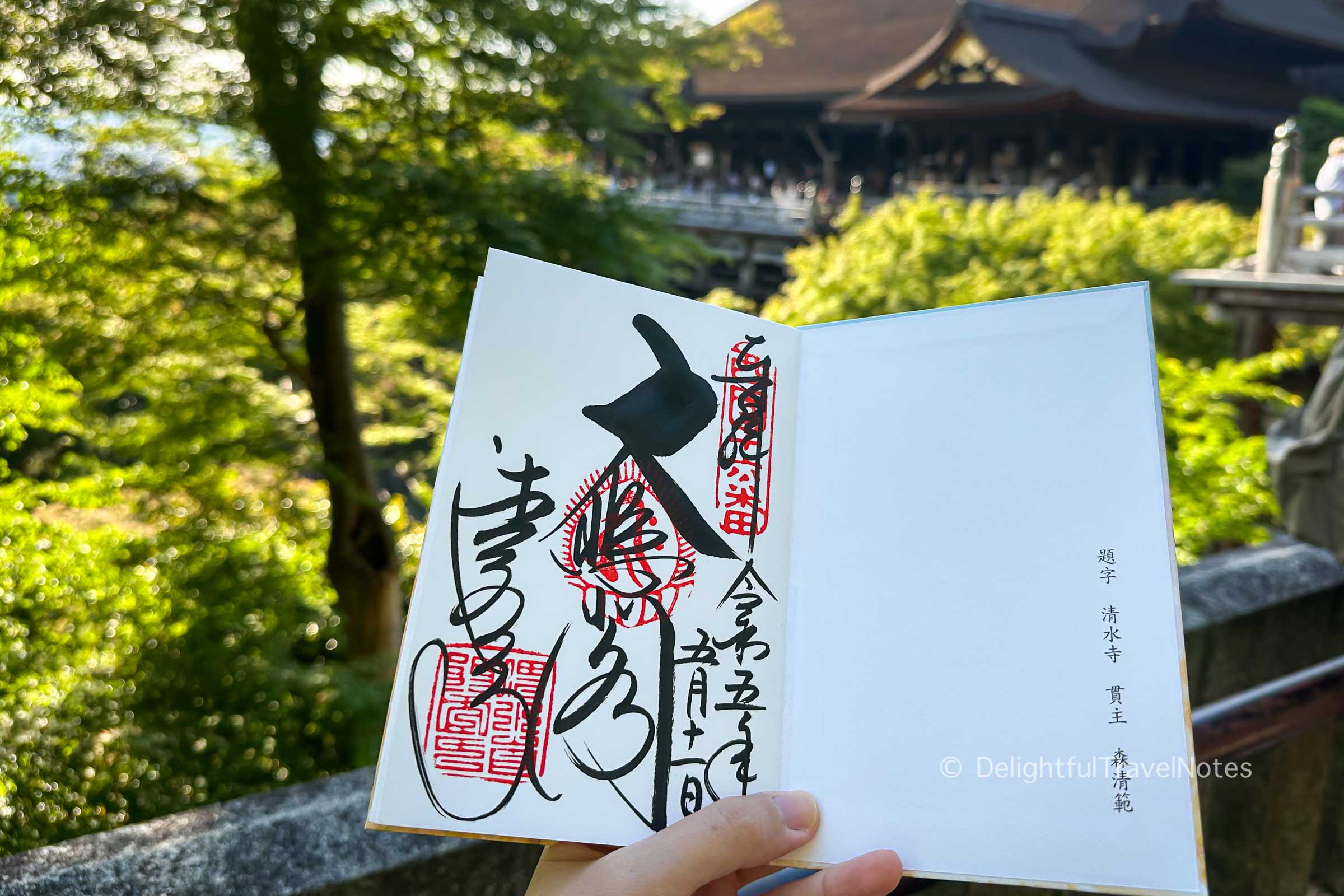
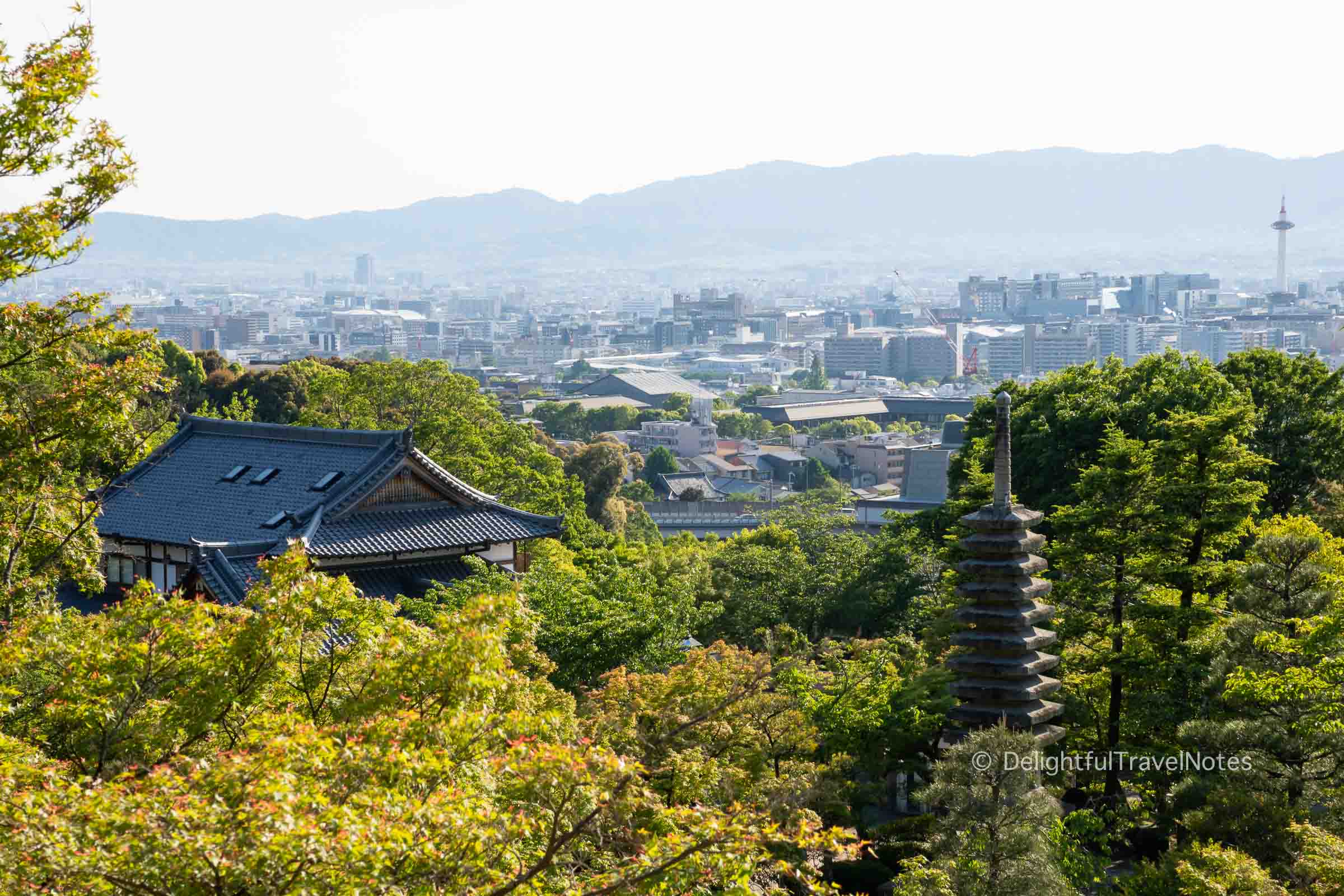
Exiting Kiyomizu-dera, we treated ourselves to some roasted chestnuts and chestnut mochi on Sannenzaka. They were truly delectable!
Kaiseki Dinner
After a brief rest at the hotel, we walked to Hanasaki Manjiro for our dinner reservation. The meal was fantastic, with fresh ingredients prepared to bring out their natural flavors and plated beautifully. It was an excellent end to our first day in Kyoto.
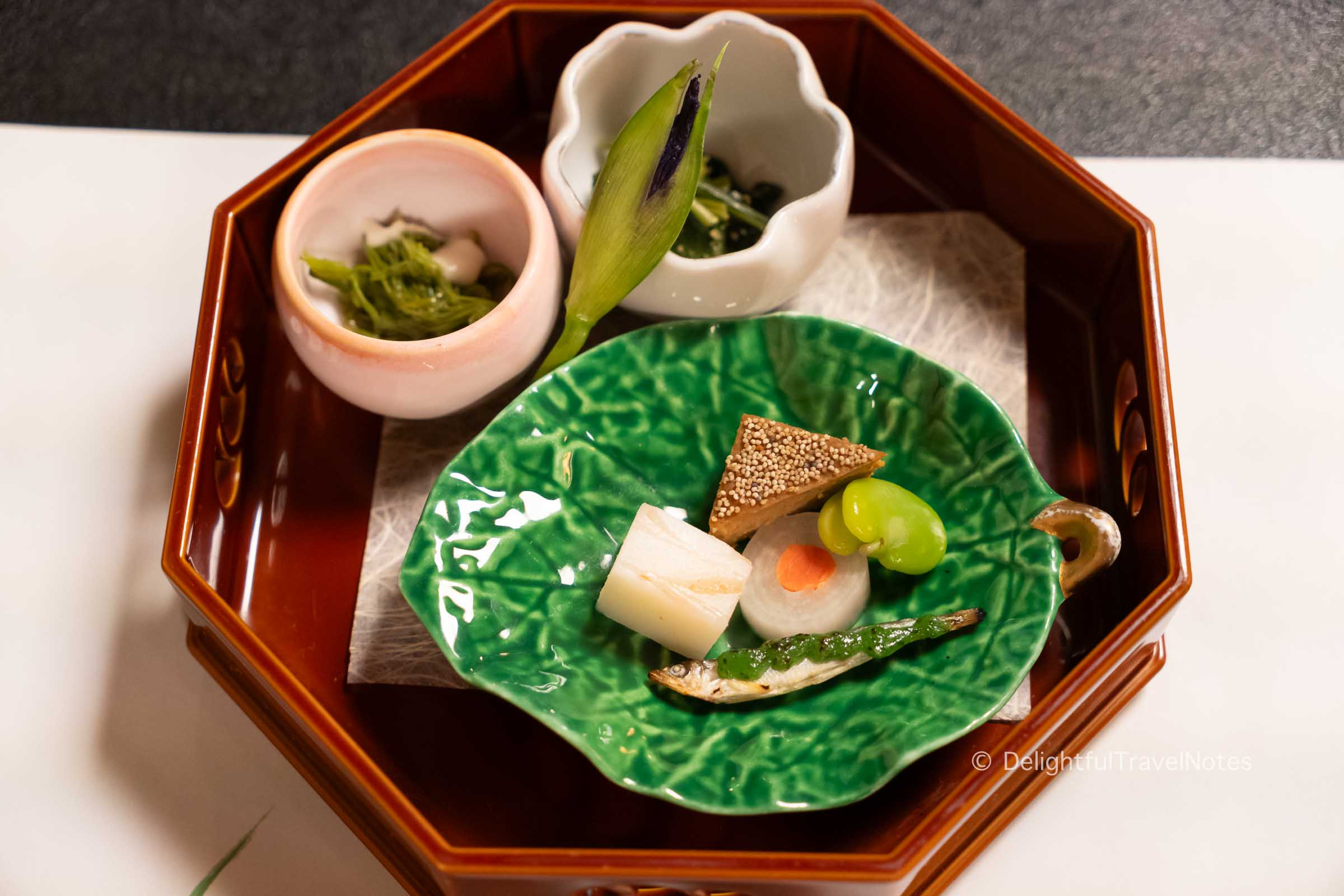
You can read this post about our kaiseki dinner at Hanasaki Manjiro with photos of each course. We highly recommend it for people looking for affordable kaiseki in Kyoto.
Day 2
Breakfast
We started the day with a filling breakfast at the hotel. It was a Japanese buffet spread that boasted a variety of dishes – rice, miso soup, vegetable tempura, braised pork belly, seasoned vegetables, fluffy tamagoyaki, yogurt, fruit, and warabi mochi.
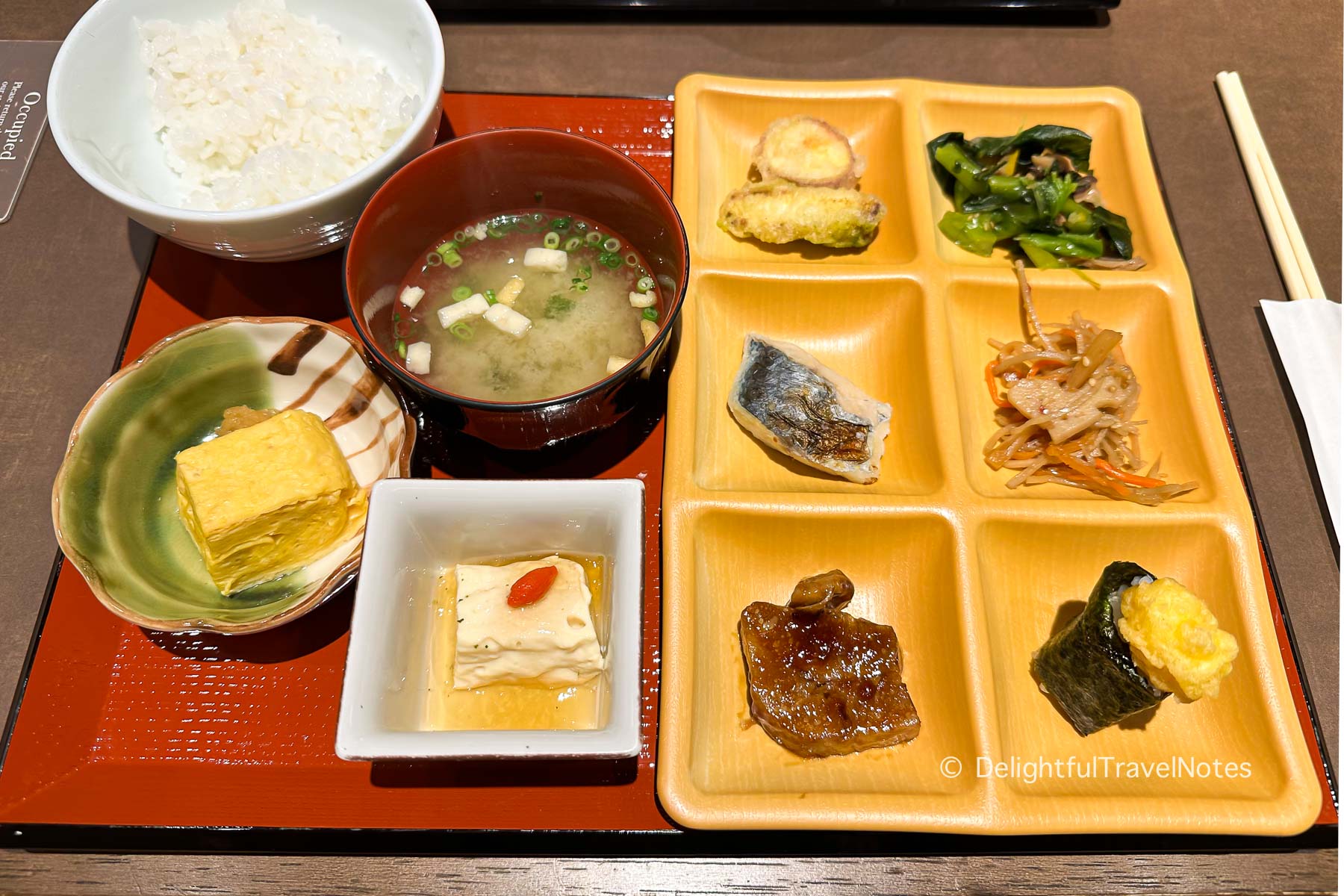
Gion Half-day Walking Tour
After breakfast, we met up with Daisuke-san, our local guide, for the private walking tour. We booked his tour on toursbylocals.com. Polite, patient, and fluent in English, Daisuke-san went over our preferences for the tour. Then he took us to the Kennin-ji temple, the oldest Zen Buddhist temple in Kyoto, to start the tour.
We then explored Gion streets, gaining insights into the geisha profession and maiko training. Daisuke-san also explained the history of Gion, and how tea houses held a significant place.
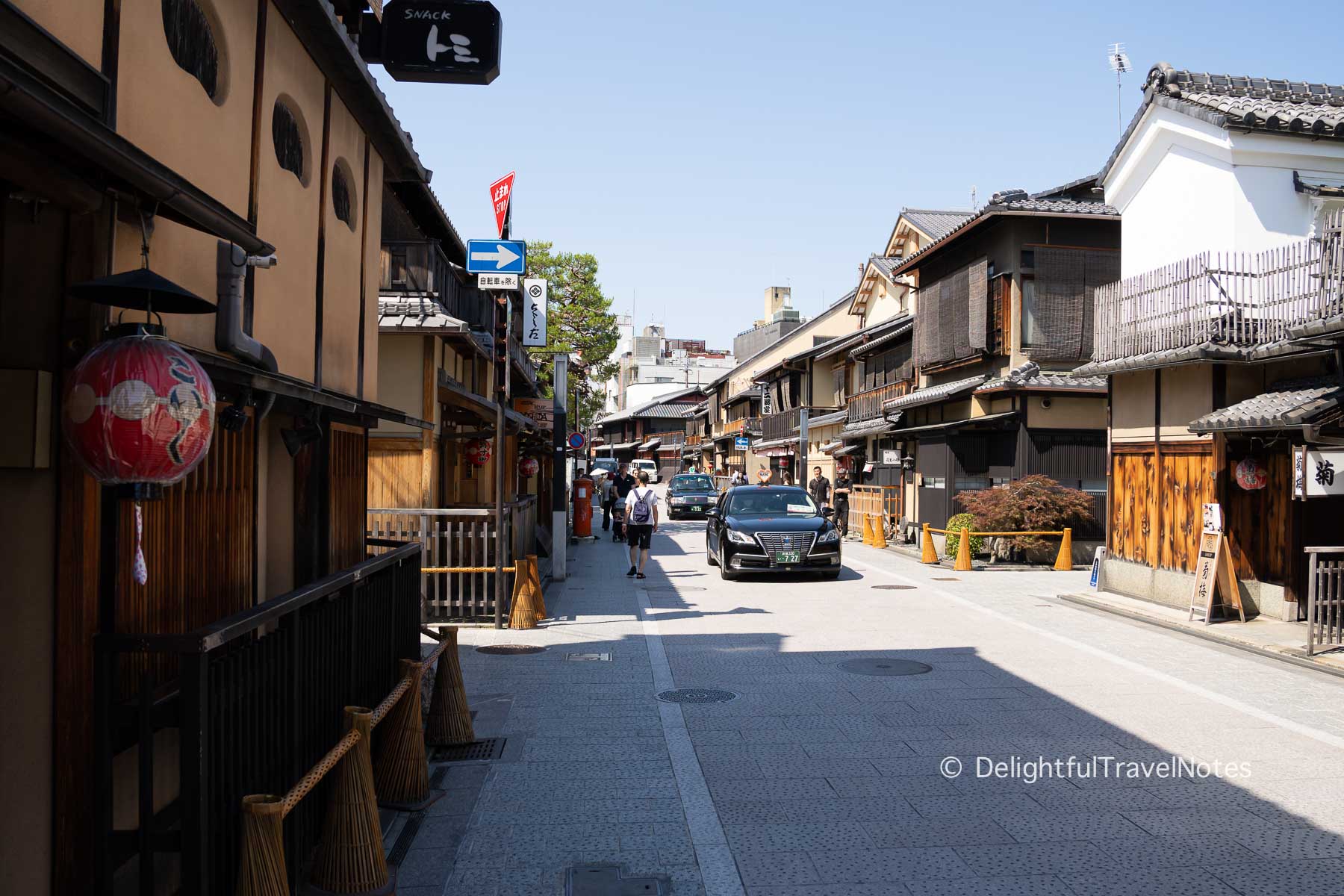
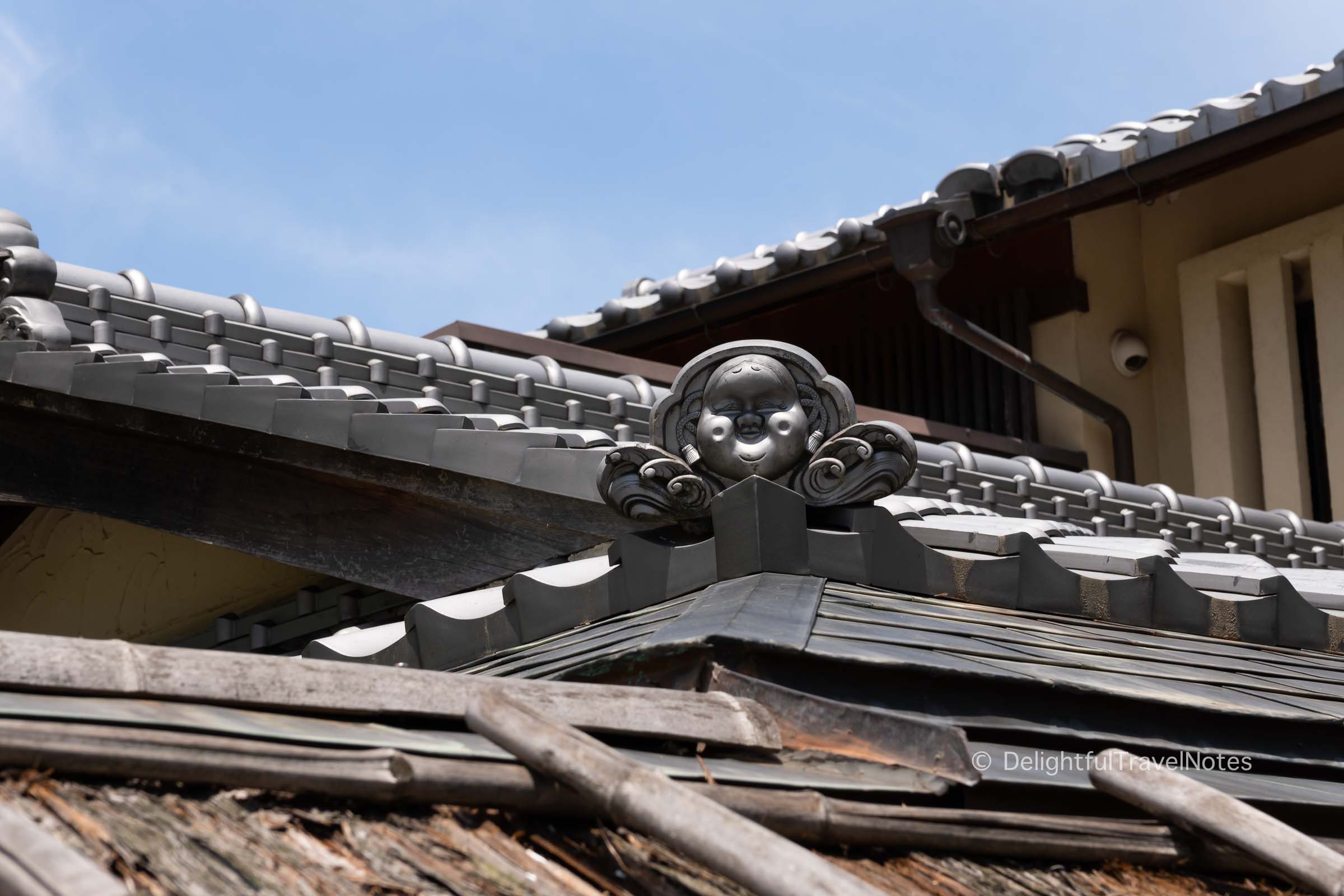
As we visited more temples and shrines in Gion, he explained to us the difference between Shinto and Buddhism in Japan, as well as how the two religions have coexisted. He also taught us how to pray at Shinto shrines. I added more goshuin to my collection during the walk.
Overall, we were very happy with this guided tour. It gave us the needed background to develop understanding and connection to the place. Our guide took us to different corners of Gion, some of which were very quiet. What a stark contrast to popular places such as Hanamikoji-dori, Ninenzaka and Sannenzaka.

There are other platforms you can also use to find private walking tours in Kyoto, such as TripAdvisor, GetYourGuide, and Viator.
Lunch
For lunch, we followed Daisuke-san’s recommendations: nishin soba at Matsuba, saba sushi at Izuu, and matcha ice cream at Tsujiri. All of them were excellent, with the saba sushi particularly outstanding. The mackerel was very fatty and meaty. Here’s my full list of the top must-try foods in Kyoto.

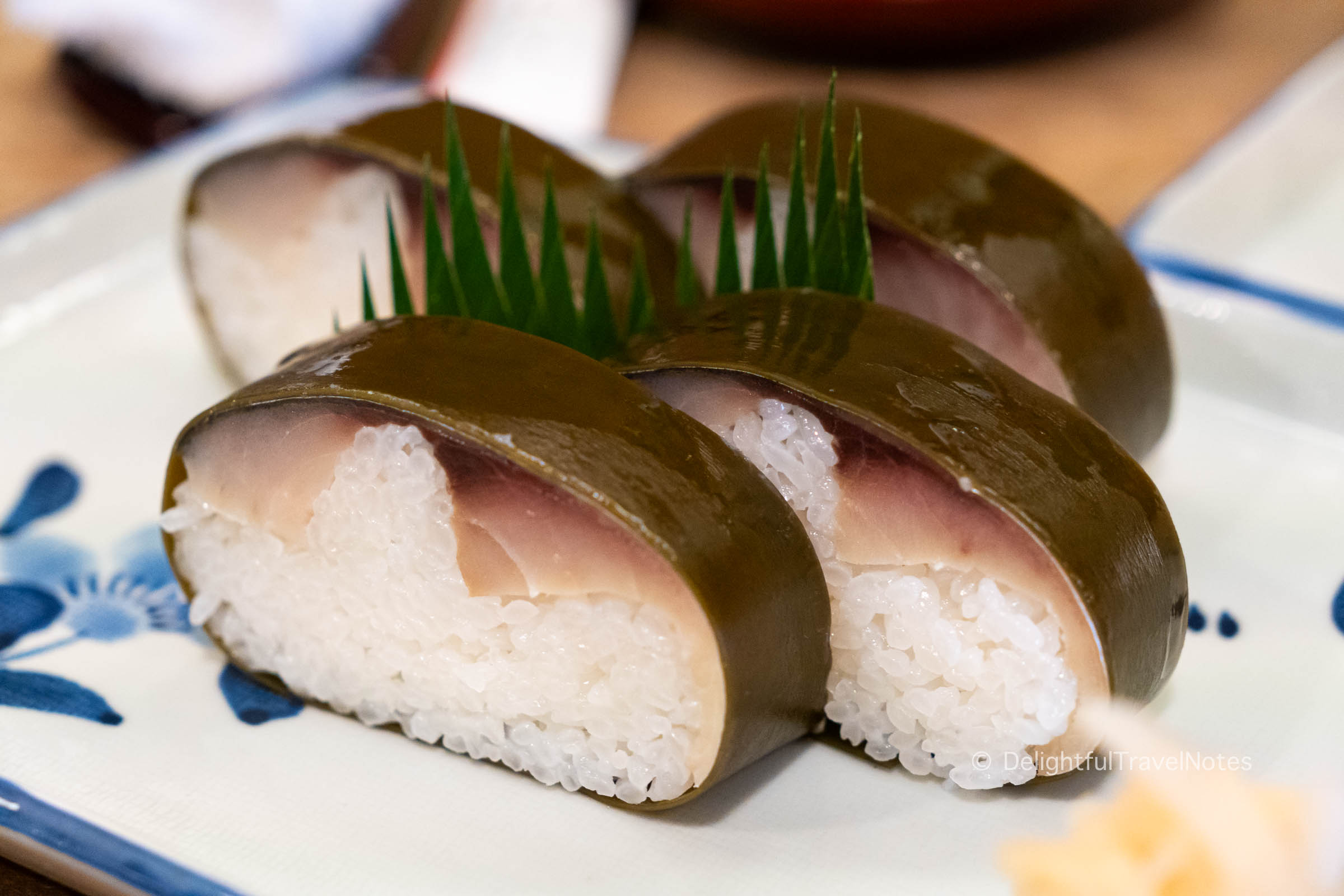
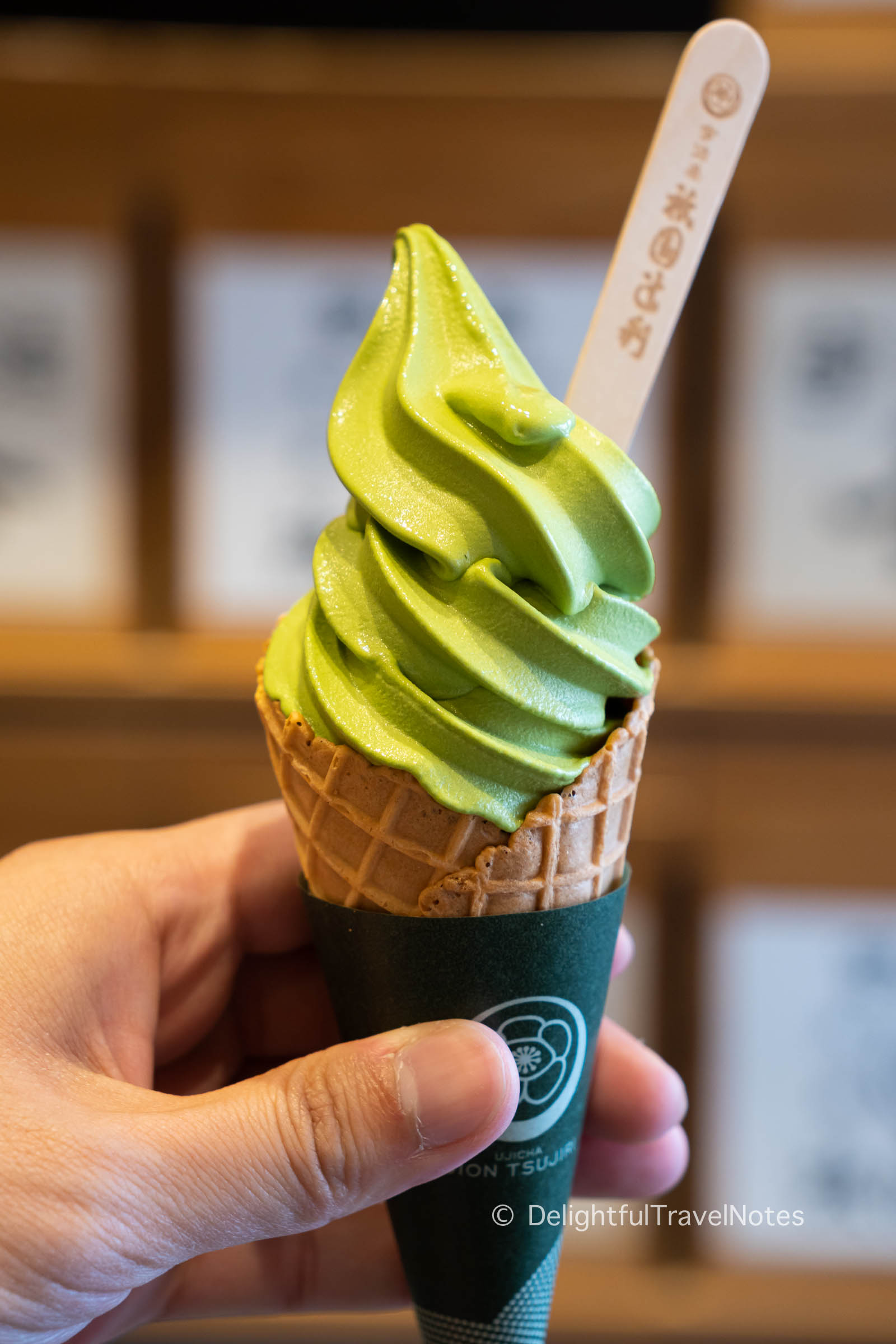
We didn’t have to wait at any of the places, even Izuu, which only had a total of four tables. Maybe showing up at 1:30pm helped!
Kinkaku-ji
We went back to the hotel for a short rest. It was super convenient to have accommodation in Gion as it allowed us to take a break whenever necessary. Then we took a taxi to Kinkaku-ji.
When planning the trip, we read some reviews that said Kinkaku-ji was a quick stopover with not much to see, so we didn’t have much expectation. However, seeing this iconic golden temple in person far exceeded our expectation, and we were glad we didn’t skip it. The golden structure was beautiful, and we spent some time looking at it from different angles and analyzing the architecture.
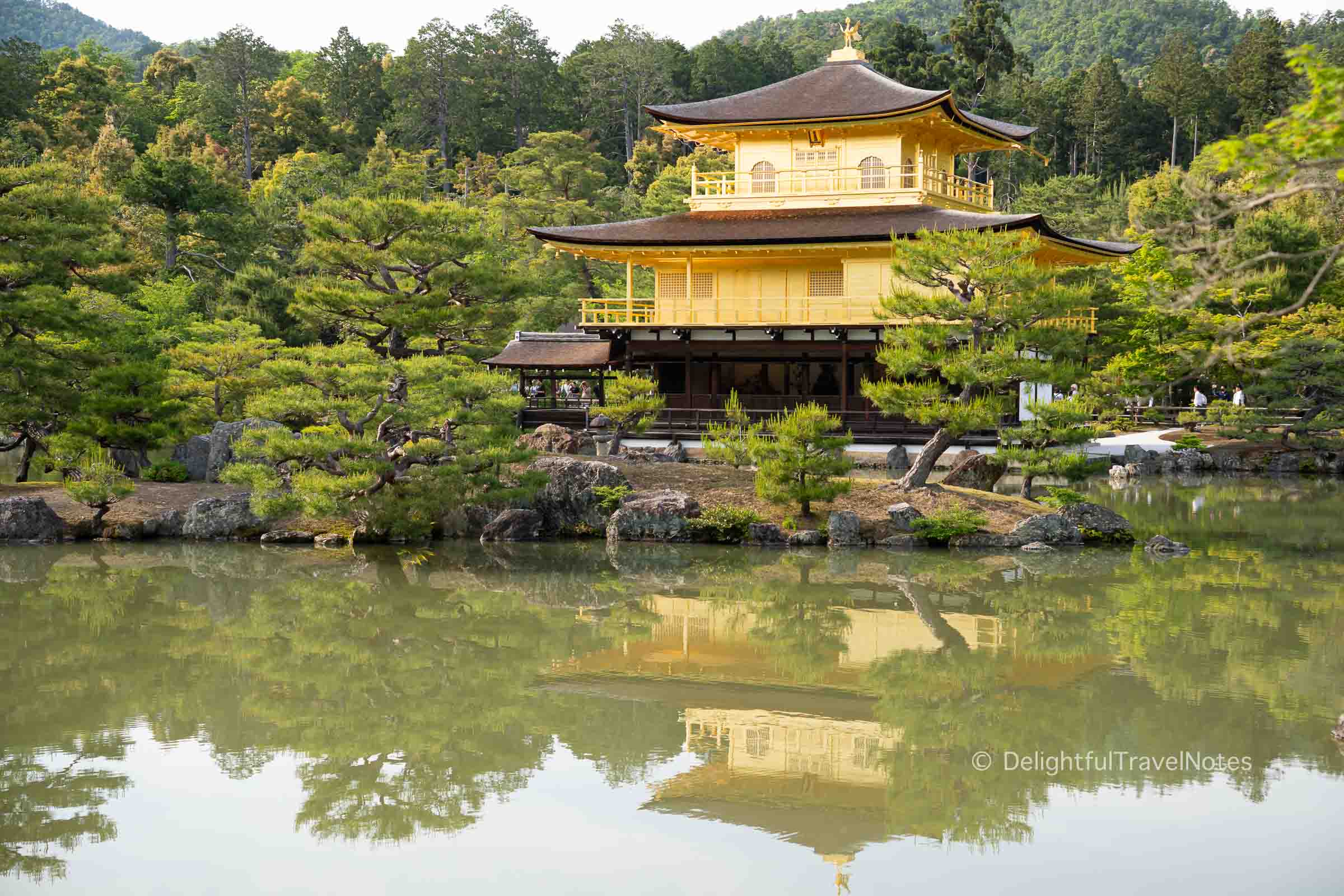
Even late in the afternoon, the place was still crowded with visitors, but it was quite manageable and did not detract from our experience. For those interested, the goshuin office is located near the exit of the temple grounds.
After seeing Kinkaku-ji, we stopped by Kyoto station to get our shinkansen tickets to Odawara. The process was a breeze since JR staff could speak English well and were helpful. We asked for seats on the mountain side with the hope of seeing Mount. Fuji on the Tokaido shinkansen line.
Dinner
We ended the day with a dinner at Gion Yuki izakaya. We were given seats right away. Though the seating was a bit tight, the food made up for it. The agedashi tofu was the star of our meal, surprisingly.

Day 3
Fushimi Inari
We tried to wake up early to avoid the crowds at Fushimi Inari, and arrived around 7:15am after a 15-minute taxi ride. There were not too many people, and the higher we went, the fewer people we saw.
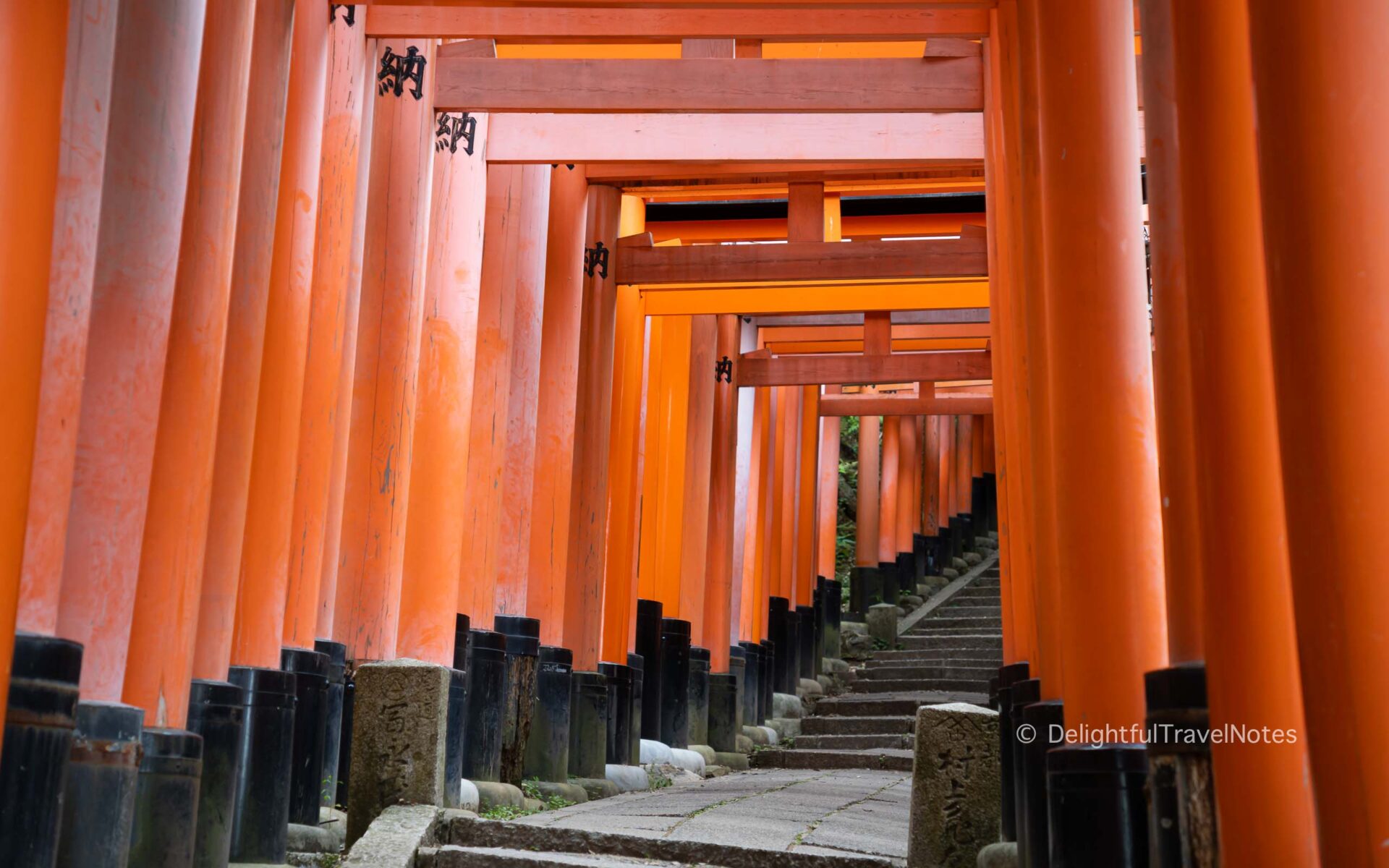
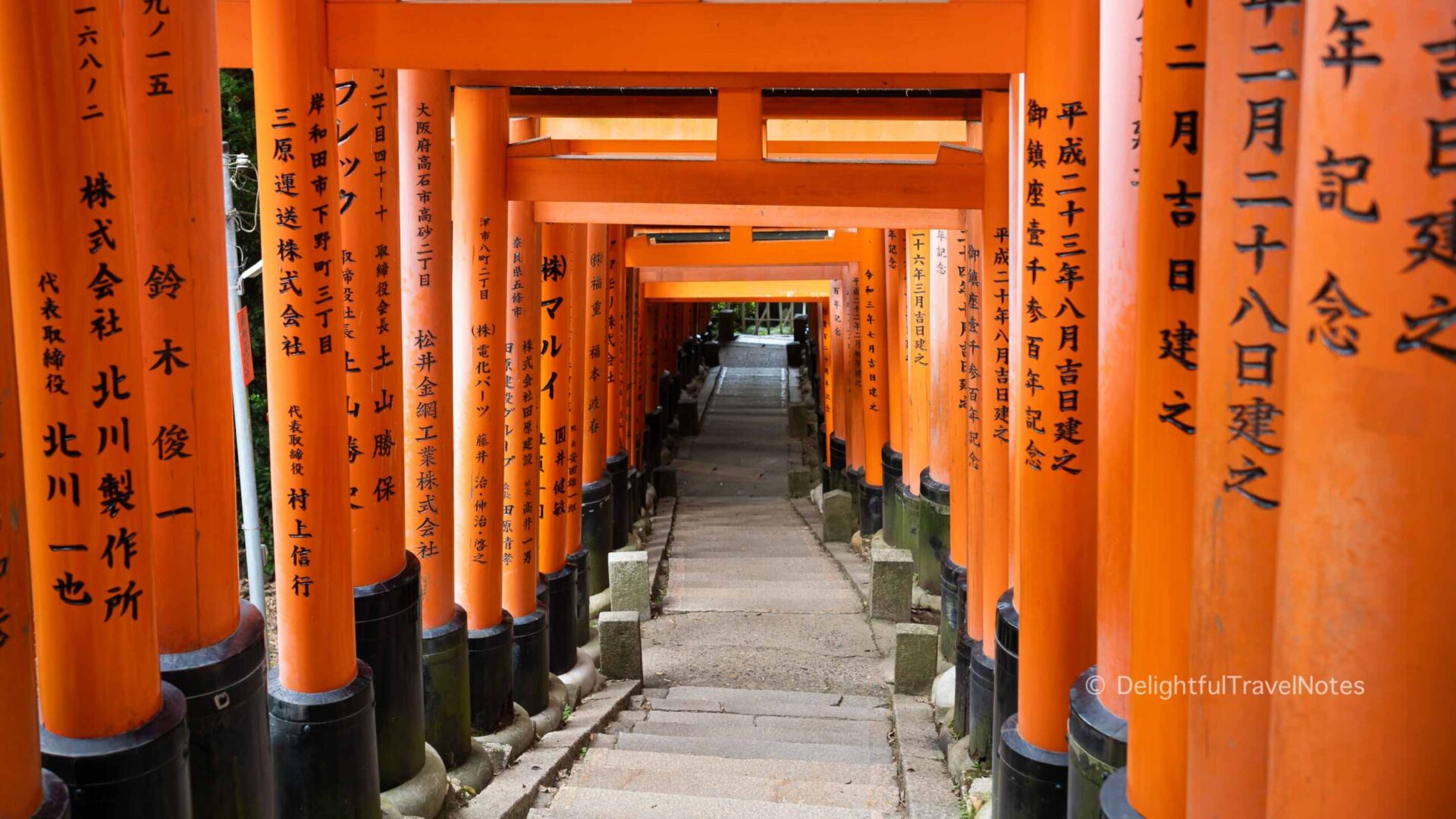
After a 35-40 minute hike, we went back to find the main shrine packed with visitors and school trip kids. We got a goshuin before leaving, and this was our first goshuin that wasn’t written directly into the goshuincho. You can actually collect 4-5 more goshuin along the hike up Fushimi Inari.
There are smaller trails at Fushimi Inari which are quieter. From my research, one of those even leads to a pretty nice bamboo grove. You can try to find it yourself or book a Fushimi Inari hidden hiking trail tour.
We returned to the Celestine hotel for a light breakfast, then walked around Gion and sampled some chocolates and cookies from Malebranche.
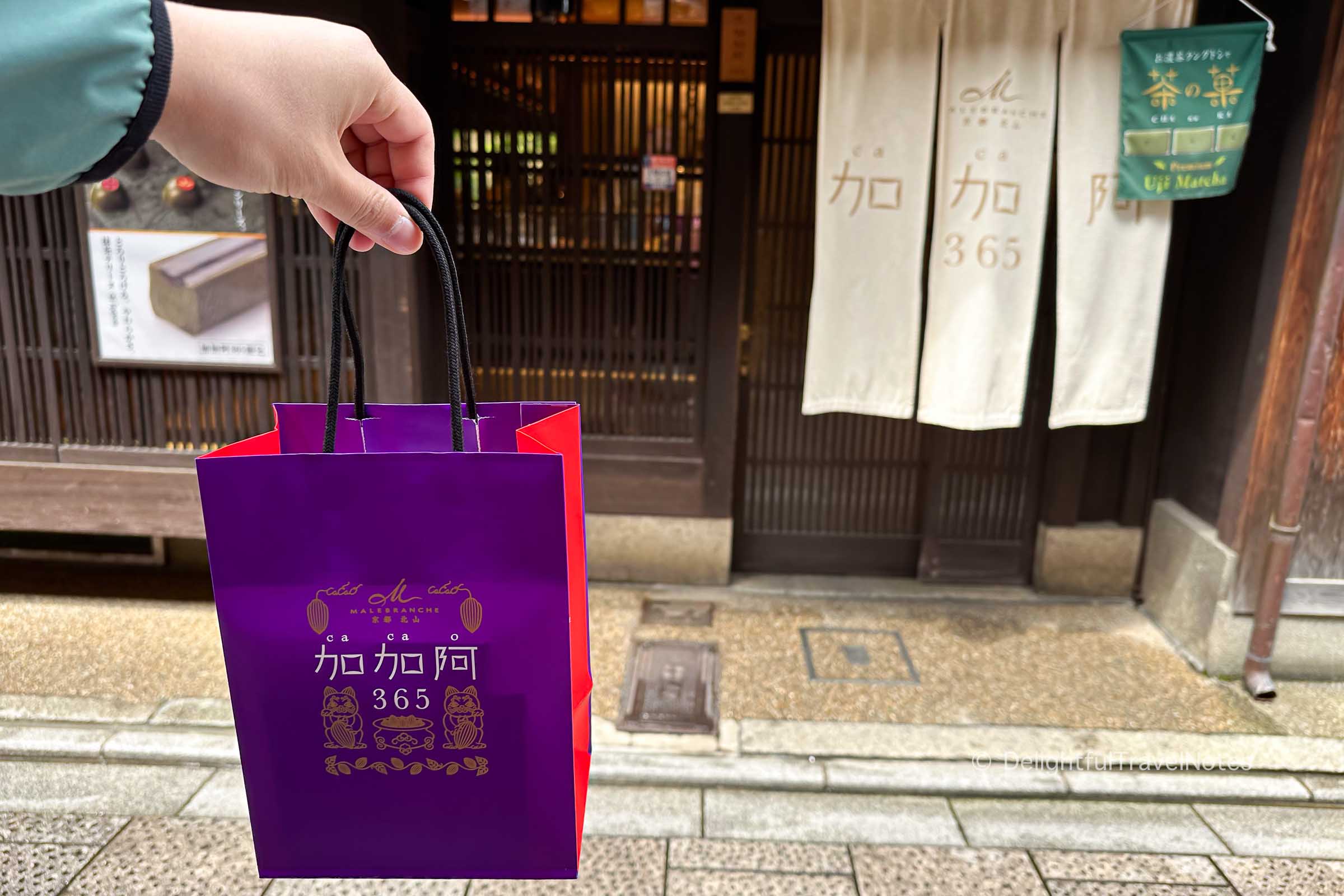
At this point, we got quite fond of our daily walk from the hotel through Kennin-ji temple grounds to Hanamikoji-dori. A bit of rest later, we headed out for our reserved lunch at Hassun.
Lunch
Our reservation at Hassun was made by the hotel concierge a month in advance, and it was one of the highlights of our Kyoto trip. The restaurant has a low-profile entrance.
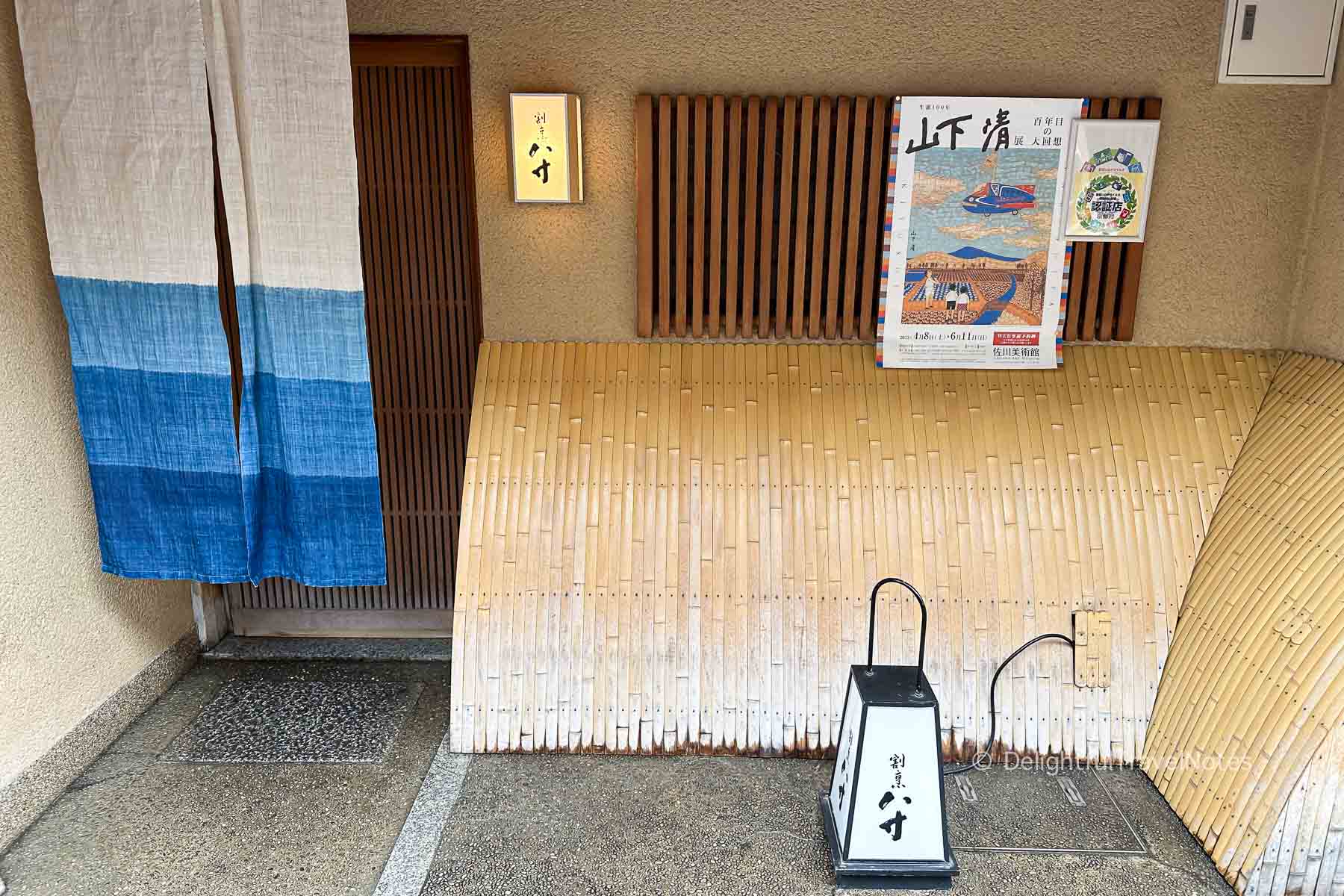
By now, we realized traditional Japanese restaurants (ryotei) in Kyoto often had no clear sign or menu outside the building. Hanasaki Manjiro, Izuu and Hassun are all like that. You may walk past many restaurants in Gion without noticing their existence. When arriving at places like those, we often slid the door open and said “Sumimasen” to let staff know of our arrival.
Hassun is a kappo restaurant, where guests sit at the counter and observe the chef prepare the multiple-course meals using different cooking techniques. We were impressed with the two-person team at Hassun – the head chef and his assistant – who skillfully handled cooking, plating, serving, and cleaning while maintaining conversations with guests!
Our much anticipated lunch at Hassun was fantastic. The quality of ingredients was top-notch. The suimono (clear soup) with fish fillet and toasted mochi, squid salad, octopus, unagi rolled burdock, and akami sashimi were the standouts. The akami sashimi, in particular, was the best I’d tasted on the trip – very tender, lean, and mildly sweet.

After lunch, we picked up some yatsuhashi, a traditional Kyoto sweet, at Izutsu. We tried cinnamon and matcha flavors, and to our surprise, the cinnamon flavor was more interesting than the matcha.
Tea Ceremony
Next, we attended a tea ceremony at the Camellia Tea House in Gion near Sannenzaka. The venue and tea room were quite small, and we were asked to leave our bags downstairs but the compartments had no lock.
The demonstrator of our tea ceremony group session spoke good English and was friendly. However, the experience seemed tailored toward Western tourists with no previous knowledge of tea ceremonies. The information provided was rather basic. Since we have been using matcha and making drinks quite often, the experience was somewhat underwhelming.
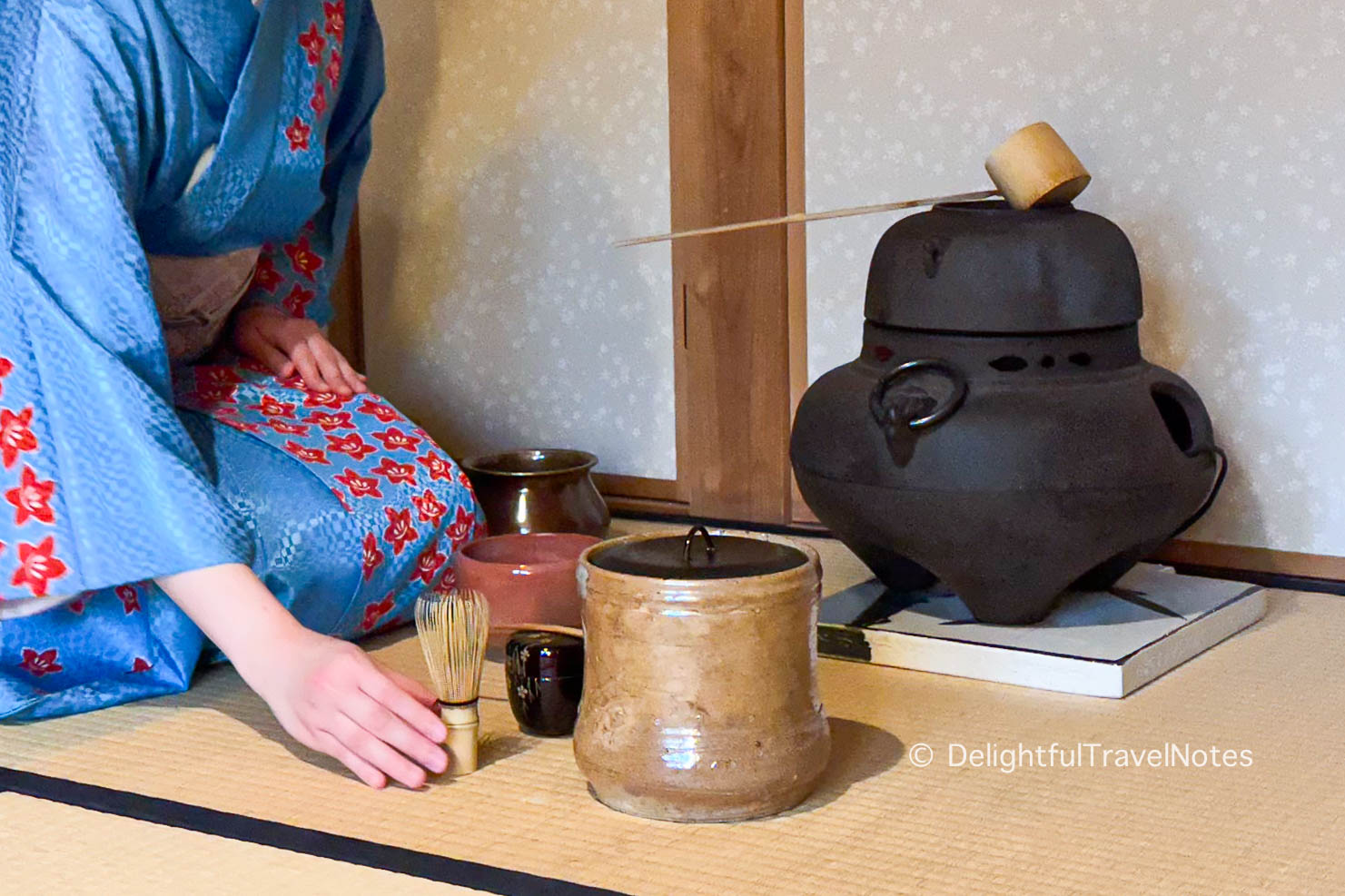
Overall, I think those who are unfamiliar with matcha may enjoy this. Alternatively, there are other places that do tea ceremony in Kyoto, such as this tea ceremony at Jotokuji Temple or this tea ceremony near Kinkaku-ji. You can take a look at them and compare.
Kodai-ji
When we left the tea room, it started to rain more heavily. We scrapped our plan to visit Nanzen-ji and headed to the nearby Kodai-ji instead. Kodai-ji wasn’t initially included in our Kyoto itinerary, but it turned out to be a pleasant surprise.
The lush, tranquil Japanese garden at Kodai-ji was stunning, and we found a small bamboo grove there. There were very few visitors at Kodai-ji and we felt like having the whole place to ourselves, soaking in the serene atmosphere.

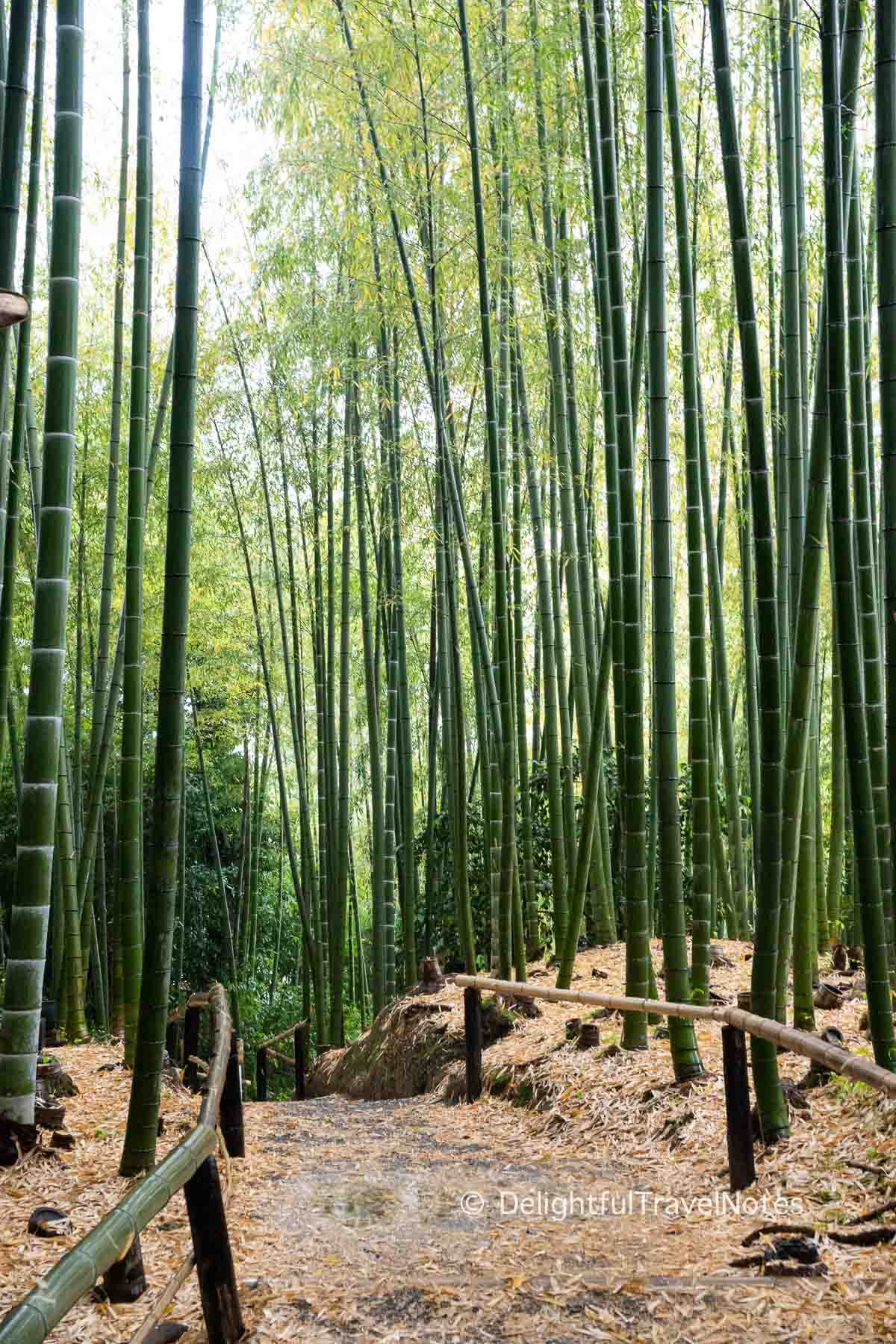
Depachika Bento
We were quite tired at the end of the day and as the rain continued, we decided to grab unagi don and curry omurice bento from Takashimaya depachika. The food was surprisingly tasty, with the Kansai-style unagi becoming our new favorite. You definitely need to check out depachika in Japan!
After 3 days in Kyoto, we started to feel more comfortable speaking simple Japanese phrases and words we had learnt before the trip. People were extremely kind and helpful so far, despite our limited ability to speak Japanese.
Day 4
Morning in Arashiyama
After having breakfast at the Celestine hotel, we took a taxi straight to Otagi Nenbutsu-ji temple in Arashiyama. The ride cost about 4,500 yen. We arrived at 9 am, and the light rain, paired with the cool weather, lent the place a serene atmosphere.
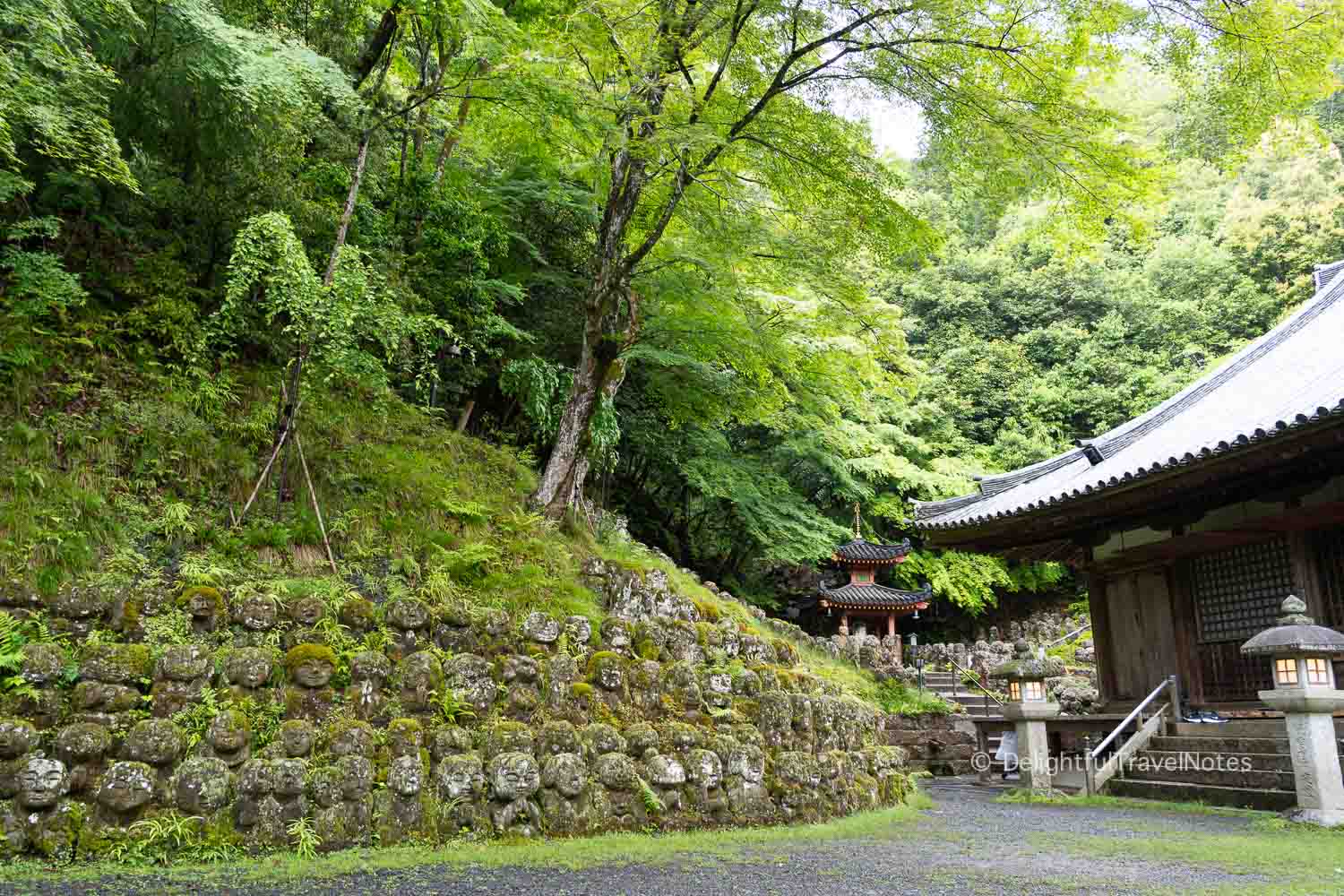
This temple is small but beautiful with many unique stone carvings. The best part was there were only two or three other visitors!
Afterward, we strolled down to visit Adashino Nenbutsu-ji, which was equally quiet. Its bamboo garden was small but gorgeous, offering perfect photo opportunities without anyone else in the frame.

We continued to walked down through the beautiful and quiet Saga Toriimoto Reserved Street, all the way to the touristy bamboo forest which was super packed and noisy. The Arashiyama bamboo forest was such a contrast to the serene bamboo groves at Adashino Nenbutsu-ji. If you choose to visit the bamboo forest, I recommend coming early to avoid the crowds.
Then we walked along the river. It was Sunday, so the streets were bustling with locals and tourists alike. We headed to Tofu Matsugae for lunch, and got in with no wait. The yuba and tofu lunch sets were tasty, light and delicate. I suggest dunking the tofu cube in the sesame sauce for an enhanced taste.

After lunch, we stopped by Tenryu-ji temple and got a glimpse of the garden. The place was packed, making it hard to truly enjoy the beauty of the garden. We had a brief walk around and collected a goshuin. The goshuin was all stamped with no calligraphy this time.

You can check out ideas on how to plan your own Arashiyama self-guided walking route here, as well as other things to do and eat in that area.
Kyoto Railway Museum
We took a taxi from Arashiyama to the Kyoto Railway Museum. The museum was quite large, featuring many train models and detailing the timeline of railway development in Japan. However, English information was a little limited, so we relied heavily on Google Translate. This museum seems like a very popular attraction for families in Kyoto.
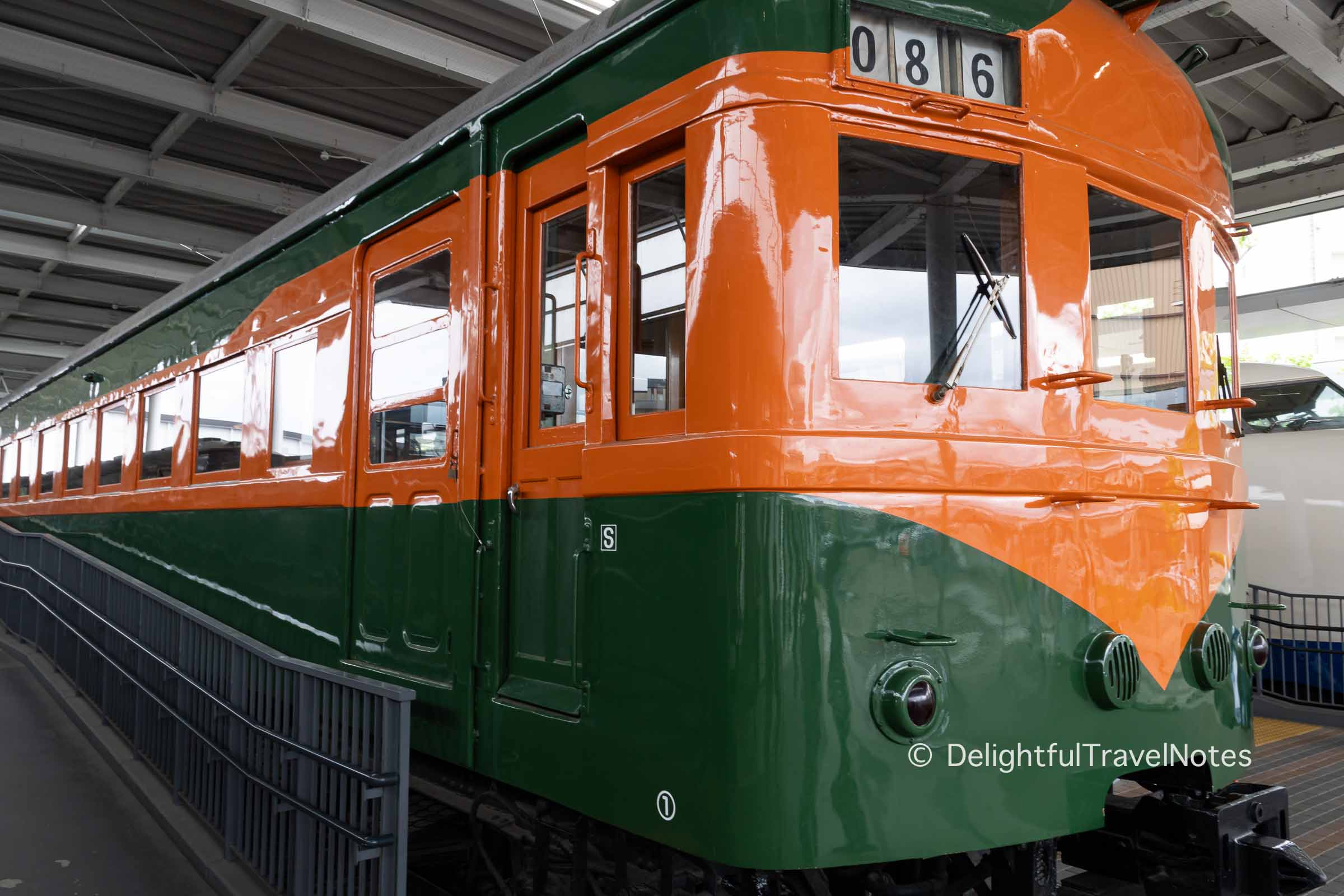
Leaving the museum, we stopped by Tsujiri in Gion again to buy a variety of tea as souvenirs from Japan. They had many products, including matcha, sencha, hojicha, and genmaicha. Everything we bought and tried at home was very tasty.
Sukiyaki Dinner in Gion
Our last dinner in Kyoto was at Junidaiya in Gion, where we got to try Kansai-style sukiyaki. Our dinner set included a huge appetizer plate, and everything on it was delicious.
A kind female staff then came and cooked sukiyaki at the table for us. The beef was tender and the sukiyaki wasn’t overly sweet. The Kansai method of cooking sukiyaki allowed the rich, meaty flavor of the beef to take center stage. We left feeling fully satisfied.

We returned to the hotel, and asked them to help us arrange luggage delivery to Tokyo. This service was so useful, allowing us to travel light to Hakone the next day.
Departure
So this is our departure day. We had breakfast at the hotel and the offerings remained the same throughout our stay. It was delicious, but it would have been nice if they had switched up some of the dishes.
Checking out of Celestine Hotel Gion was a quick and smooth process. We got on a taxi to Kyoto station and bought an ekiben (train bento) for the ride ahead. At 8:33 am, we boarded the Hikari shinkansen to Odawara for our two-night stay in Hakone in a traditional ryokan with private onsen. It was time to say goodbye to Kyoto, and we couldn’t wait to go back soon.
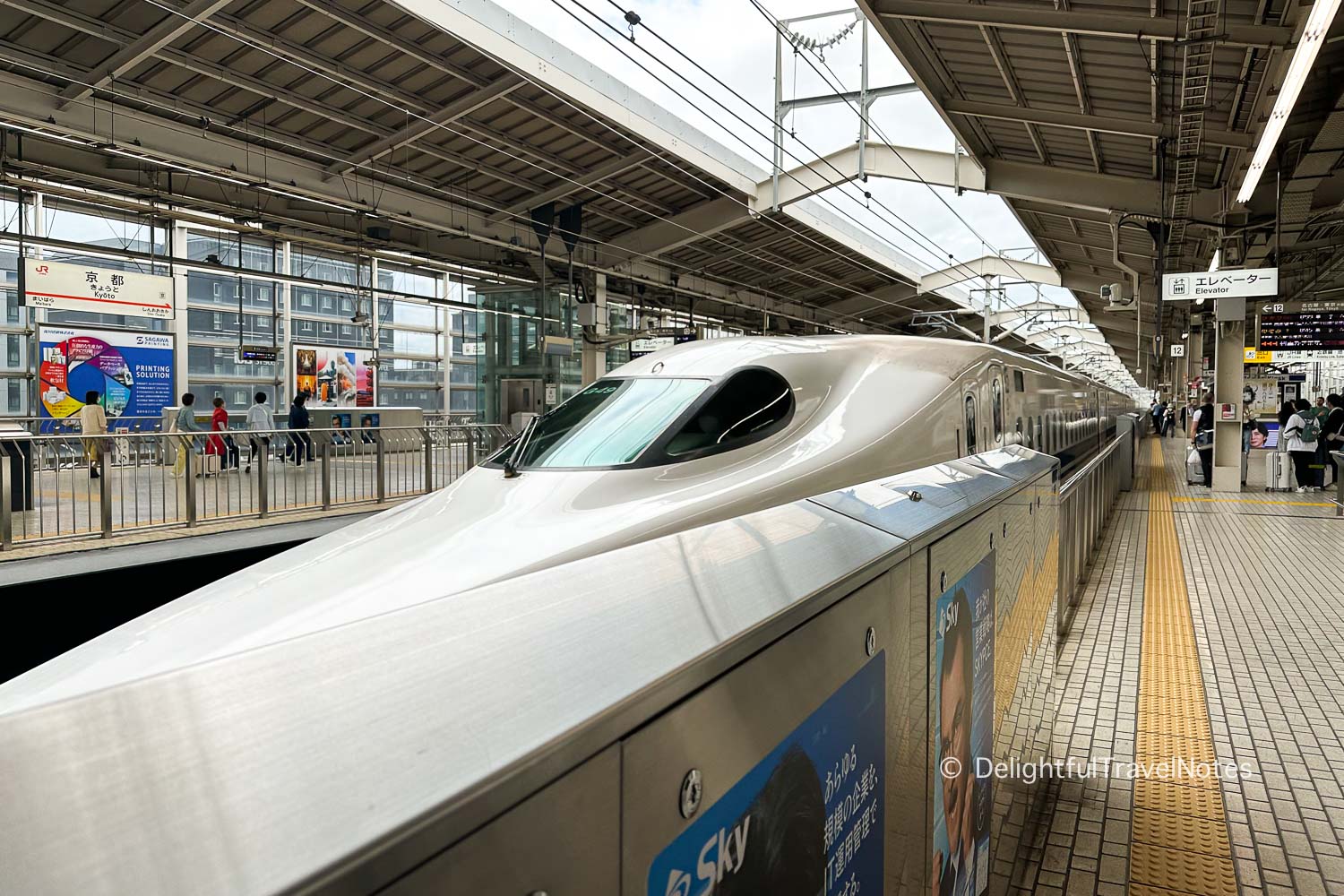
That was how we spent four days in Kyoto. We hope our four-day Kyoto itinerary has not only given you an inside look into our trip but also offered some valuable insights to help you plan your own.
Further Read
So after a year, we returned to Kyoto for a few days in May 2024. This time we stayed at The Thousand Kyoto near Kyoto Station. We still enjoyed the city as much as the first time and planned to come back again at the end of this year. Here are a few more Kyoto travel guides you may like to read:
